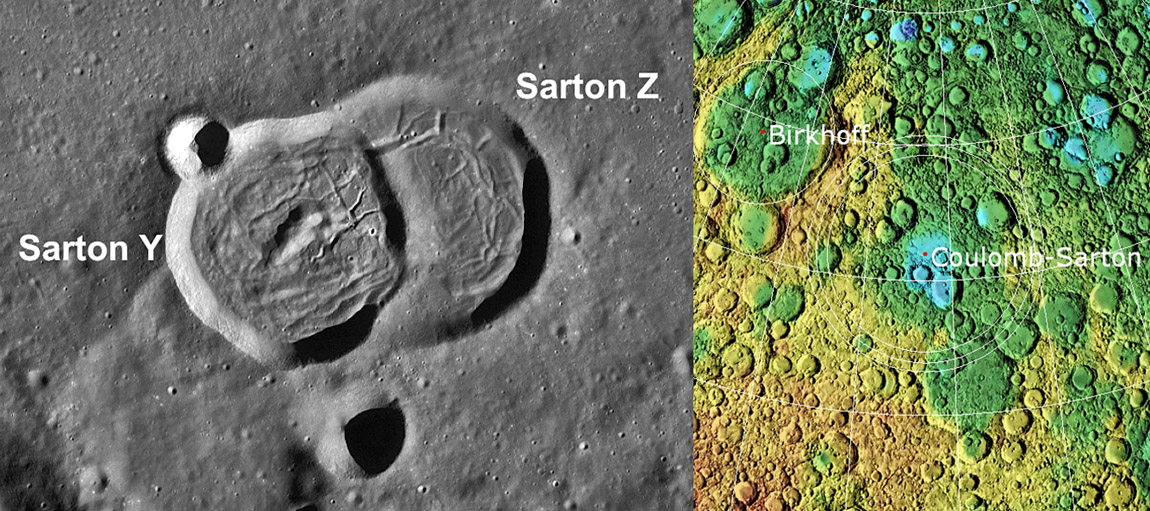Difference between revisions of "October 28, 2011"
| (One intermediate revision by the same user not shown) | |||
| Line 4: | Line 4: | ||
<!-- ws:start:WikiTextHeadingRule:0:<h1> --> | <!-- ws:start:WikiTextHeadingRule:0:<h1> --> | ||
<!-- ws:start:WikiTextLocalImageRule:6:<img src="/file/view/LPOD-Oct28-11.jpg/269423946/LPOD-Oct28-11.jpg" alt="" title="" /> -->[[File:LPOD-Oct28-11.jpg|LPOD-Oct28-11.jpg]]<!-- ws:end:WikiTextLocalImageRule:6 --><br /> | <!-- ws:start:WikiTextLocalImageRule:6:<img src="/file/view/LPOD-Oct28-11.jpg/269423946/LPOD-Oct28-11.jpg" alt="" title="" /> -->[[File:LPOD-Oct28-11.jpg|LPOD-Oct28-11.jpg]]<!-- ws:end:WikiTextLocalImageRule:6 --><br /> | ||
| − | <em>left image from [http://lroc.sese.asu.edu/news/index.php?/archives/473-Two-of-these-things-are-not-like-the-others.html#extended LRO Featured Image] and right map from [ | + | <em>left image from [http://lroc.sese.asu.edu/news/index.php?/archives/473-Two-of-these-things-are-not-like-the-others.html#extended LRO Featured Image] and right map from [https://the-moon.us/wiki/Coulomb-Sarton_Basin The Moon-Wiki]</em><br /> |
<br /> | <br /> | ||
| − | These two floor-fractured craters deep in the farside highlands are lonely. They are by themselves with no others nearby. That isn't surprising because most floor-fractured craters occur near the edges of maria in impact basins, and dark mare lavas are rare in the highlands region of the farside. But these two FFCs are near the middle of the ancient but still detectable Coulomb-Sarton impact basin. In the map on the right the craters are right under the C in Coulomb, right on the edge of a relatively flat area that is the lowest part of the basin floor, shown in blue. The [ | + | These two floor-fractured craters deep in the farside highlands are lonely. They are by themselves with no others nearby. That isn't surprising because most floor-fractured craters occur near the edges of maria in impact basins, and dark mare lavas are rare in the highlands region of the farside. But these two FFCs are near the middle of the ancient but still detectable Coulomb-Sarton impact basin. In the map on the right the craters are right under the C in Coulomb, right on the edge of a relatively flat area that is the lowest part of the basin floor, shown in blue. The [https://the-moon.us/wiki/Coulomb-Sarton_Basin C-S Basin] has a mascon, a gravity anomaly, and models suggest that there is a dense mare fill 1.2 km thick. Presumably, impact-produced fractures under these two craters siphoned off magma that was rising into the basin, and pushed up these craters, fracturing their floors. The existence of these craters actually provides evidence that magma did rise into this farside basin.<br /> |
<br /> | <br /> | ||
<em>[mailto:tychocrater@yahoo.com Chuck Wood]</em><br /> | <em>[mailto:tychocrater@yahoo.com Chuck Wood]</em><br /> | ||
Latest revision as of 17:56, 13 October 2018
Coulomb-Sarton Explanation

left image from LRO Featured Image and right map from The Moon-Wiki
These two floor-fractured craters deep in the farside highlands are lonely. They are by themselves with no others nearby. That isn't surprising because most floor-fractured craters occur near the edges of maria in impact basins, and dark mare lavas are rare in the highlands region of the farside. But these two FFCs are near the middle of the ancient but still detectable Coulomb-Sarton impact basin. In the map on the right the craters are right under the C in Coulomb, right on the edge of a relatively flat area that is the lowest part of the basin floor, shown in blue. The C-S Basin has a mascon, a gravity anomaly, and models suggest that there is a dense mare fill 1.2 km thick. Presumably, impact-produced fractures under these two craters siphoned off magma that was rising into the basin, and pushed up these craters, fracturing their floors. The existence of these craters actually provides evidence that magma did rise into this farside basin.
Chuck Wood
Related Links
LAC chart 20
Yesterday's LPOD: Mare Exemplum
Tomorrow's LPOD: How Tall?
COMMENTS?
Register, Log in, and join in the comments.



